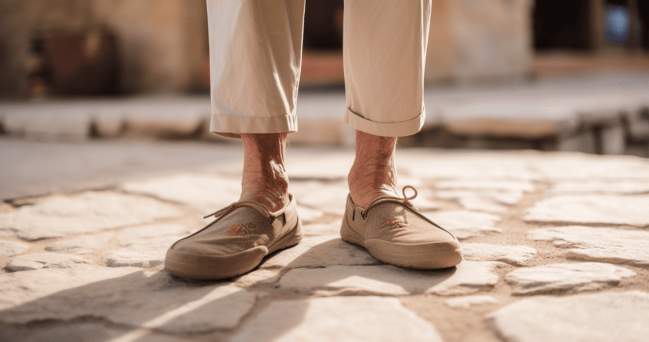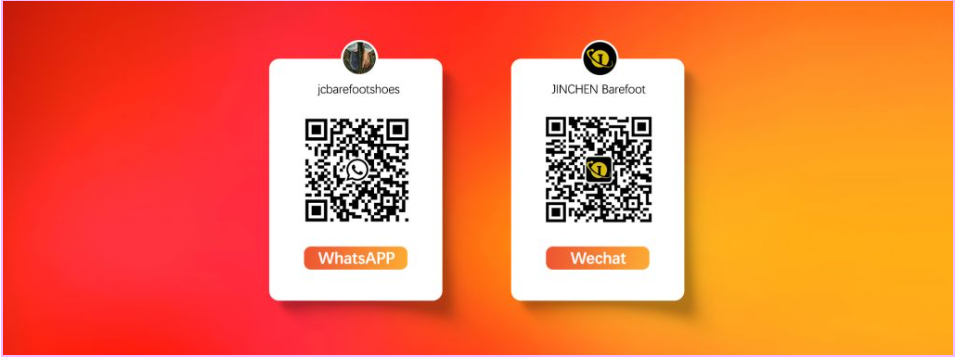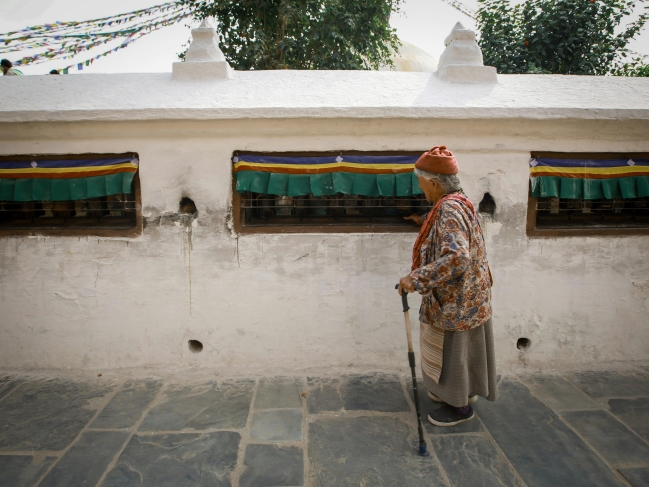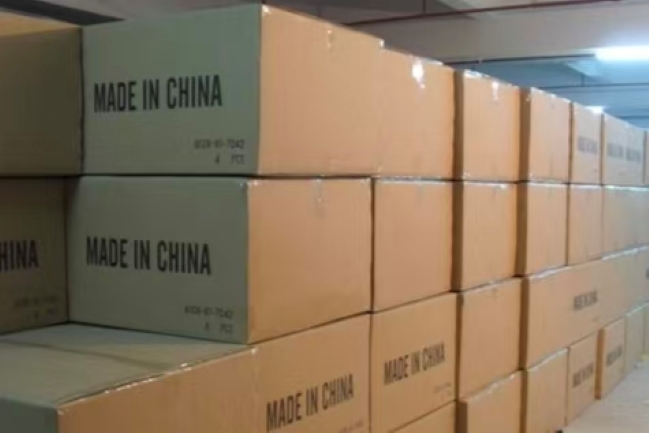Today, with more and more people advocating “natural living” and “healthy gait”, Barefoot Shoes are gradually becoming familiar to the public. Unlike traditional functional shoes that rely on support, shock absorption and arch support, they aim for a state that is as close as possible to walking barefoot. But many people still have doubts in their hearts: Barefoot shoes are so “primitive”. Can the elderly wear them? Especially in summer, when the weather is hot and feet tend to sweat and get tired easily, is it suitable for the elderly to go out in barefoot shoes?
The answer is: They can wear them, but must choose the right way, the right style and proceed step by step.
In fact, for the elderly who are getting older and beginning to experience gait deterioration and foot problems, barefoot shoes are not a “novelty” in the fashion trend, but a healthy choice that gently awakens the body’s primitive wisdom. As long as one understands its principle and masters the details of wearing it, barefoot shoes can definitely become a “health helper” for the elderly’s daily outings in summer.
1.Why are barefoot shoes suitable for the elderly? Three benefits you may have never thought of before
Activate plantar perception to help the elderly walk more steadily
As people age, the nerve endings and perceptual abilities in the soles of their feet gradually decline, their feedback to the ground becomes sluggish, their sense of balance decreases, and the risk of falling greatly increases. Barefoot shoes, on the other hand, do exactly the opposite – without thick insoles or raised heels, allowing the sole to directly perceive subtle changes in the ground, thereby stimulating neural feedback and improving proprioceptive ability.
For example, walking in ordinary thick soled shoes is like wearing gloves to pick up needles, with unclear perception and slow movements. Wearing barefoot shoes is like operating with bare hands, sensitive and natural. For elderly people, having a “greater sense” under their feet allows them to take each step more steadily.
Help restore natural gait and reduce knee and waist burden
Many elderly people have a habit of ‘heavy foot landing’, with each step carrying an impact, which is actually related to wearing traditional shoes with heels all year round. Barefoot shoes have no heel height difference and encourage the foot to land from the forefoot or midfoot. This landing method is gentler and reduces the impact on the knee joint, ankle joint, and lower back, helping to improve common problems such as knee pain, lower back pain, and walking delays in the elderly.
Foot muscles’ return to work ‘, delaying arch degeneration
Common foot problems among elderly people, such as arch collapse, hallux valgus, toe deformity, and flat feet, are largely related to long-term passive foot movements. Wearing shoes with excessive support, the muscles in the feet almost no longer work. Barefoot shoes, on the other hand, have the opposite effect. Their “unsupported” design actually activates the plantar muscles that should have exerted force, thereby enhancing the stability of the arch structure.
It can be said that barefoot shoes are a “foot muscle reconstruction plan”, without additional exercise, just walking every day is repairing the body structure.
2.Four core details that elderly people need to pay attention to when wearing barefoot shoes in summer
Of course, although barefoot shoes are good, for the elderly, the way they wear them must be scientific and cautious in order to truly achieve the desired effect
Gradually transition, don’t rely solely on it from the beginning
The challenge of barefoot shoes to the body is that they require the feet to ‘learn and work again’. Especially for elderly people who are wearing barefoot shoes for the first time, they may feel sore calves, tired soles, and even discomfort after taking a few steps.
It is recommended to wear it for 1 hour every day at the beginning, starting from indoors or flat ground, and gradually adapting. You can gradually increase the wearing time during daily walks and home activities, and then use it for long-term outings after your body adapts.
People with reduced plantar fat should pay attention to protection and buffering
Many elderly people have thinning fat pads on their feet, making it easy to feel pain when walking on hard surfaces. Especially in summer when the road surface temperature is high and the ground is hard, the minimalist sole of barefoot shoes may cause discomfort.
It is recommended to choose a style with a sole thickness between 4mm and 6mm, a soft but elastic sole material, and lightweight cotton socks to cushion friction and temperature, which not only retains the feeling of being barefoot but also enhances comfort.
Choose a suitable scenario and start from a safe ground
Barefoot shoes emphasize ground perception, but it does not mean immediately challenging gravel roads, mountains, or park trails. It is recommended that elderly people wear clothing in areas such as cement roads, doorstep platforms, and plastic road surfaces in parks during the early stages to avoid additional stimulation caused by uneven road surfaces.After the feet adapt, try more complex road conditions.
Use with caution for special populations, consult a doctor if necessary
Barefoot shoes may not be suitable for the elderly with diabetes foot, severe osteoporosis, foot blood circulation disorders and other diseases. It is recommended to try under the guidance of a rehabilitation doctor or podiatrist, and if necessary, choose rehabilitation shoes with support for greater safety.

3.How should elderly people choose to wear barefoot shoes in summer?
There are various styles of barefoot shoes on the market, but not all are suitable for the elderly. Here are a few selection suggestions:
✔ Breathable upper:
In summer, it is easy to sweat. It is recommended to choose mesh, knitted, lightweight and soft shoe upper materials, such as engineered mesh or cotton linen blend, which are breathable and dry, avoiding foot odor or athlete’s foot.
✔ Moderate thickness of sole:
It’s not the thinner the better! The sole, which is 5-8mm thick, soft and elastic, is most suitable for elderly people who are trying it for the first time. It retains the perception of the sole of the foot while avoiding the shock caused by hard ground.
✔ Wide last design:
Barefoot shoes must have a wide forefoot and naturally spread toes. Elderly people with hallux valgus or deformed toes especially need this kind of “relaxation space”.
✔ Easy to wear and take off structure:
It is recommended to choose Velcro, one-legged or elastic shoelace designs. There is no need to bend over to tie the shoelaces, which is more friendly to people with limited mobility.
✔ Machine washable or easy to clean:
In summer, people sweat a lot and wear shoes frequently. It is recommended to choose shoes that can be machine washed or are easy to wipe to reduce the trouble of cleaning.

4.Professional Recommendation Series (Selected from Well-known Brands)
Daily comfort type (Suitable for first-time users)
Vivobarefoot Primus Lite III
✅ international leading brand of barefoot shoes
✅ 4mm patented puncture-resistant outsole
✅ wide last design + detachable antibacterial insoles
🔍 compatible: daily walks, light exercise
Skechers GOwalk Arch Fit
✅ optimized for Asian foot shape
✅ dynamic arch support technique
✅ lightweight design (about 180g per unit)
🔍 for people with collapsed arches of the foot
Summer breathable type (top choice for hot weather)
Merrell Vapor Glove 5
✅ outdoor brand professional barefoot style
✅ 360° breathable mesh structure
✅ Vibram® ultra-thin anti-slip outsole
🔍 fit: summer daily/hiking
Nike Free RN 5.0
✅ classic barefoot running shoes iteration
✅ partition elastic groove design
✅ reflective details enhance night vision safety
🔍 fit: morning exercise/brisk walking
Safety protection type (anti-slip and stable version)
ECCO BIOM 2.0
✅ Danish royal brand
✅ patented FLUIDFORM™ direct injection molding process
✅ wetland anti-slip test meets ASTM F2913 standard
🔍 compatible with: rainy days/tiled floors
New Balance Minimus 10v1
✅ 10mm progressive midsole
✅ Heel TPU stabilizer
✅ anti-collision toe design
🔍 Fit: people whose joints need protection
High-end medical type (Special Demand Version)
HOKA Bondi 8
✅ certified by the American College of Podiatrists
✅ memory cotton shoe bed + rolling balance technology
✅ extra-wide last selection (2E/4E)
🔍 for diabetic foot patients
ASICS GEL-Kayano 30
✅ biomechanical technology of Japan
✅ dynamic DuoMax support system
✅ removable Ortholite insoles
🔍 fit: severe flat feet
5.FAQ
Q: Can barefoot shoes cause pain in the soles of the feet?
A: There may be mild discomfort in the early stage, which is a normal process of foot muscle reconstruction. It is recommended to use it in combination with a foot massage ball.
Q: How to tell if shoes fit?
A: When standing, there should be 1cm of space between the longest toe and the toe of the shoe, and the widest part of the sole of the foot should not feel squeezed.
Q: Can it be worn on rainy days?
A: Just choose our specially made waterproof, anti-slip and breathable model.
6.Summary: Barefoot shoes are a natural path to good health in old age
Barefoot shoes are not fancy clothes; they merely help us “return to our bodies as they are”. Especially for the elderly, wearing the right pair of barefoot shoes is not merely a change in shoes, but also a transformation in walking style, body coordination pattern and health concept.
Of course, it is not omnipotent and does not produce immediate results once worn. However, if the elderly are willing to try and stick to wearing it gradually, it may become a key to helping them reduce the risk of falls, improve their gait and enhance the strength of their feet.
🌿 So this summer, prepare a pair of barefoot shoes for the elders at home.
Perhaps, they can rediscover the self that “walks briskly and is physically agile”.
Click here to get more information about barefoot shoes!




